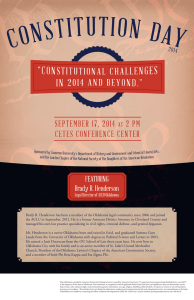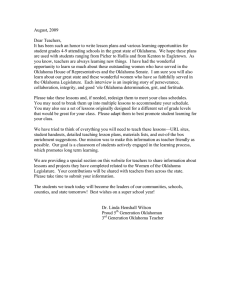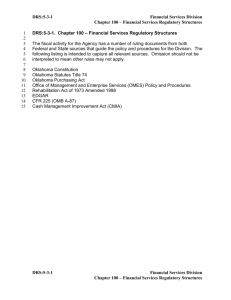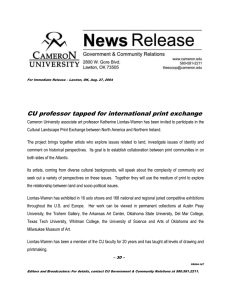M Lesson 5 any of the bills
advertisement
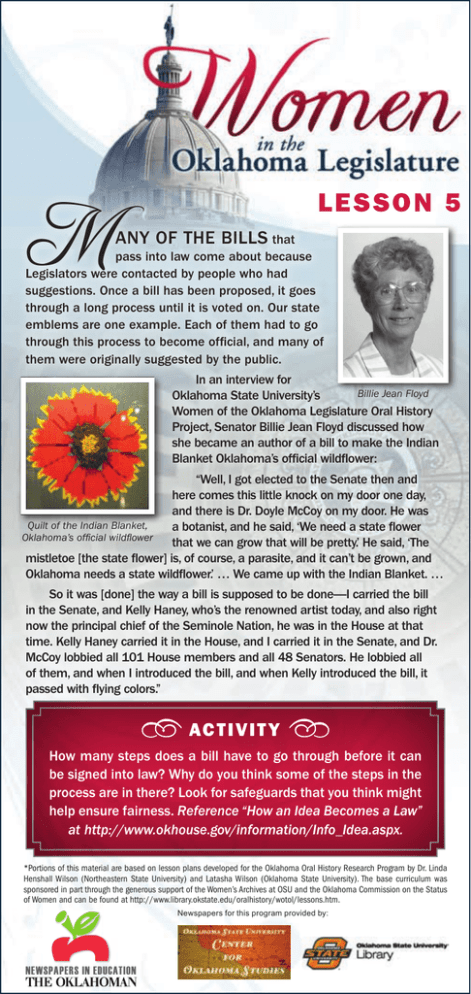
M Lesson 5 any of the bills that pass into law come about because Legislators were contacted by people who had suggestions. Once a bill has been proposed, it goes through a long process until it is voted on. Our state emblems are one example. Each of them had to go through this process to become official, and many of them were originally suggested by the public. In an interview for Billie Jean Floyd Oklahoma State University’s Women of the Oklahoma Legislature Oral History Project, Senator Billie Jean Floyd discussed how she became an author of a bill to make the Indian Blanket Oklahoma’s official wildflower: “Well, I got elected to the Senate then and here comes this little knock on my door one day, and there is Dr. Doyle McCoy on my door. He was Quilt of the Indian Blanket, a botanist, and he said, ‘We need a state flower Oklahoma’s official wildflower that we can grow that will be pretty.’ He said, ‘The mistletoe [the state flower] is, of course, a parasite, and it can’t be grown, and Oklahoma needs a state wildflower.’ … We came up with the Indian Blanket. … So it was [done] the way a bill is supposed to be done—I carried the bill in the Senate, and Kelly Haney, who’s the renowned artist today, and also right now the principal chief of the Seminole Nation, he was in the House at that time. Kelly Haney carried it in the House, and I carried it in the Senate, and Dr. McCoy lobbied all 101 House members and all 48 Senators. He lobbied all of them, and when I introduced the bill, and when Kelly introduced the bill, it passed with flying colors.” Ac t i v i t y How many steps does a bill have to go through before it can be signed into law? Why do you think some of the steps in the process are in there? Look for safeguards that you think might help ensure fairness. Reference “How an Idea Becomes a Law” at http://www.okhouse.gov/information/Info_Idea.aspx. *Portions of this material are based on lesson plans developed for the Oklahoma Oral History Research Program by Dr. Linda Henshall Wilson (Northeastern State University) and Latasha Wilson (Oklahoma State University). The base curriculum was sponsored in part through the generous support of the Women’s Archives at OSU and the Oklahoma Commission on the Status of Women and can be found at http://www.library.okstate.edu/oralhistory/wotol/lessons.htm. Newspapers for this program provided by: NEWSPAPERS IN EDUCATION
